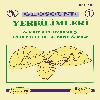Loras Dağı-Çaldağı ile Hatunsaray (Konya batısı) arasında kalan bölgenin stratigrafisi ve bazı tektonik özellikleri
Konya batısındaki Loras Dağı-Çaldağı ile Güneybatıdaki Hatunsaray Kasabası arasında kalan inceleme alanında, Geç Permiyen-Kuvaterner aralığında oluşmuş kaya birimleri yüzeyler. Bunlar otokton, allokton ve neootokton birimler şeklinde ayrılmışlardır. Gökçeyurt grubu olarak ele alınan otokton birliğin en altında metakırıntılar ve karbonatlardan oluşan Geç Permiyen-Geç Triyas yaşlı Aladağ formasyonu bulunur. Aladağ formasyonu Geç Triyas-Erken Jura yaşlı dolomitize karbonatlardan yapılı Kızılören formasyonu ile yanal ve düşey geçişli olarak, platform tipi karbonatlardan oluşan ve Jura-Kretase'de çökelmiş Lorasdağı kireçtaşına geçer. Gökçeyurt grubunun en üst birimi, Geç Kretase'de oluşan ve pelajik karbonat ve kırıntılılardan yapılı Midostepe formasyonudur. Allokton birliğin tabanında Hatip ofiyolitli karışığı yer alır. Geç Kretase'de oluşmuş bu karışık üzerine, yine tektonik bir dokanakla Çayırbağı ofiyoliti gelir. Neootokton birimlerin çoğunluğu, temeldeki formasyonları açılı uyumsuzlukla örten Dilekçi grubu içerisindedir. Geç Miyosen-Erken Piloyesen sürecinde şekillenen ve ince-kaba kırıntılarla karbonatlardan ve volkanoklastiklerden yapılı Dilekçi grubu, Sille, Ulumuhsine, Küçükmuhsine formasyonları ile Erenlerdağı volkanitleridir. Geç Pliyosen-Kuvaterner'de oluşmuş Topraklı formasyonu ve yamaç molozu ile alüvyonlar, Dilekçi grubunu uyumsuz olarak örterler. Erken Paleosen ve sonrasında Orta Alpin devinimlerle duraysızlaşan bölgede, kompresyonel tektonik rejimin etkisiyle yaklaşık D-B gidişli ana kıvrım yapıları oluşurken, ofiyolitli karışık ve okyanusal kabuk dilimlerinden yapılı naplar bölgeye yerleşmiştir. Kıvrılma ve naplaşma ile yükselen bölge, Orta Miyosene kadar bir erozyon geçirmiş ve Orta-Geç Alpin hareketlerinin izleri olarak da yörede Geç Miyosen ve Geç Pliyosen tabanlarındaki açılı uyumsuzluklar oluşmuştur.
The stratigraphy and some tectonical features between Loras Dağı-Çaldağı and Hatunsaray (Western Konya) area
The stratigraphic units in the study area have been divided mainly into three groups as autochthonous, allochthonous and neoautochthonous based on their present tectonostratigraphic position. The Late Permian-Late Triassic age Aladağ Formation is composed of elastics and carbonates. The Aladağ Formation is overlain by the Kızılören Formation which consists of dolomites in Late Triassic-Early Jurassic age. The Gökçeyurt Group continues conformably upward with the Lorasdağı Formation containing continental shelf limestone in Jurassic-Cretaceous age. The Gökçeyurt Group ends up by the Late Cretaceous age Midostepe Formation composed of deep marin sediments. The allochthonous units, are made up of the Hatip ophiolitic melange and the Çayırbağı ophiolites which were originated from the oceanic crust in Late Cretaceous time. The neoautochthonous units studied as the Dilekçi Group and Topraklı Formation, lie on the older rocks by an unconformity. This group consisting of fine coarse elastics, carbonates, volcanosediments and laves were mapped as the Sille, Ulumuhsine, Küçükmuhsine formations and Erenlerdağı volcanics. The Topraklı Formation overlies the Dilekçi Group unconformably. All of the units mentioned above are overlain by talus and alluviums disconformbly. During Early Paleocene and after Paleocene, the area was subjected to compressional stresses by the Middle Alpine movements. Major folding systems with an approximate trend of E-W were developed and ophiolitic melange and slice of the oceanic crust were emplaced on the platform by the compressional stresses. The area started to uplift by napping and folding. The upliffed are was then subjected to erosion until Middle Miocene. The impressions of the Middle-Late Alpine movements are represented by unconformities, seen at the base of the Late Miocene and Late Pliocene deposits in the study area.
___
- ISSN: 1019-1003
- Yayın Aralığı: Yılda 2 Sayı
- Başlangıç: 1986
- Yayıncı: Çukurova Üniversitesi Jeoloji Mühendisliği Bölümü
Sayıdaki Diğer Makaleler
Ahmet TURAN, Şuayip KÜPELİ, İlkay KARAKOÇ
Seyhan ve Ceyhan delta'larının kronolojik evrimi ve bunların kıyı değişimine etkileri
Tolga ÇAN, Tamer Yiğit DUMAN, Ömer EMRE, İlyas YILMAZER
Antakya ve civarındaki potansiyel deprem kaynaklarının olası maksimum yer ivmesi azalımı
Zeki BİLLOR, Alican KOP, Cavit DEMİRKOL, Hasan ÇETİN
Süreksizliklerin yeraltısuyu depolamasına ve iletilmesine olan etkisi
M.Tahir NALBANTÇILAR, M.Kemal GÖKAY
Geç Kuvaterner (Holosen) döneminde İstanbul ve çevresinde gözlenen ortamsal değişimler
Mekanik röle separatörlü iletken tank modeli çalışması
Nurdağı'nı oluşturan birimlerin yanlış adlandırılmasından kaynaklanan jeoteknik sorunlar
İlyas YILMAZER, Tamer Yiğit DUMAN
